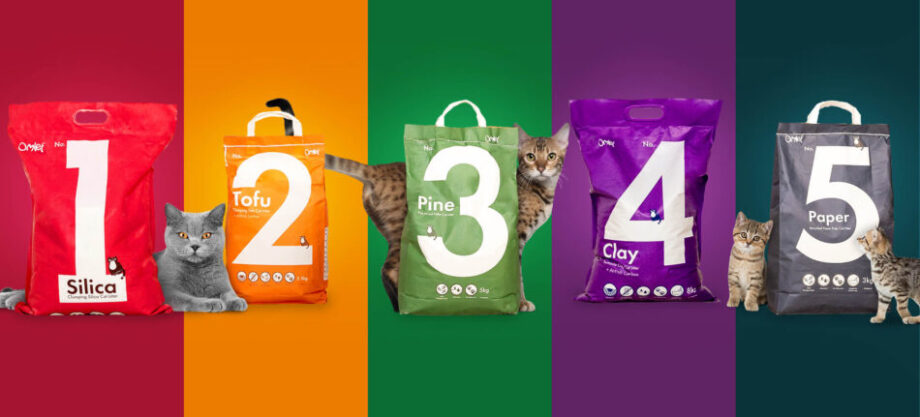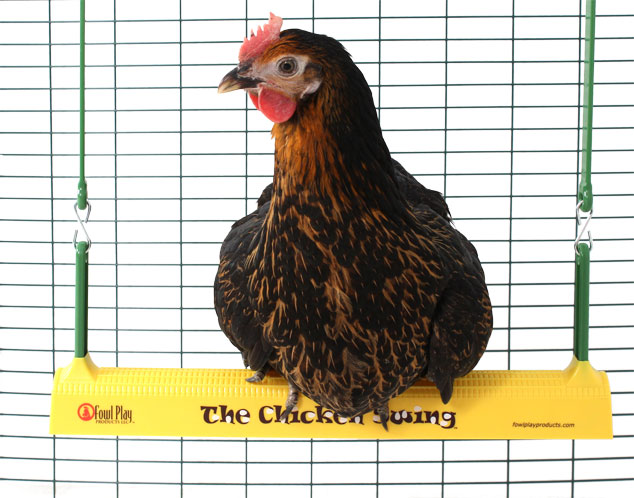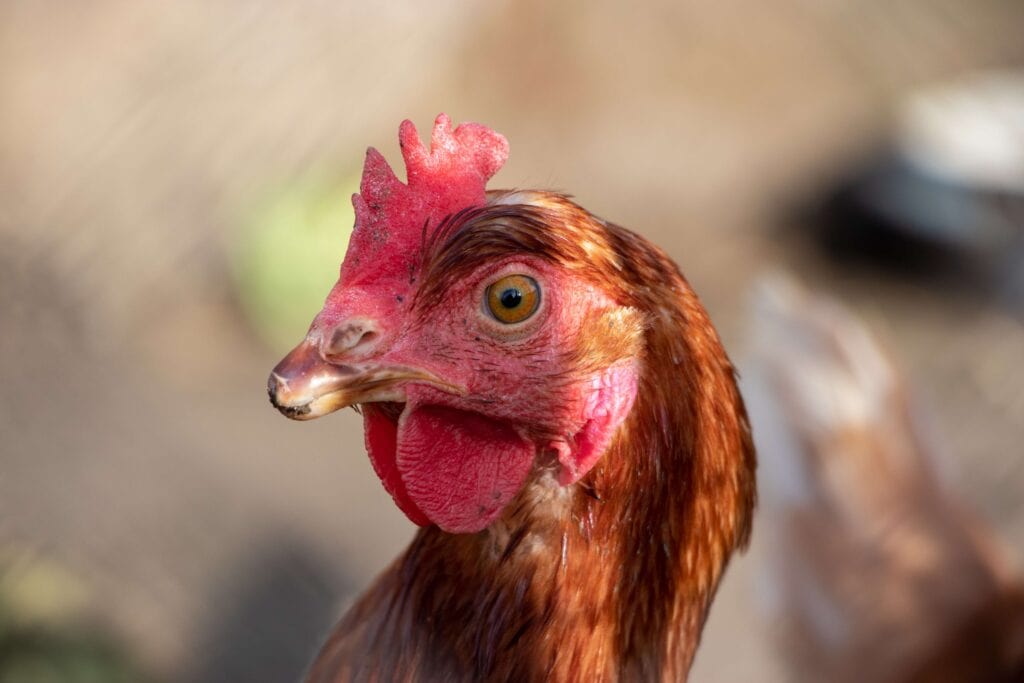
Treat your chickens this summer with some fresh Omlet Chicken Feed and Corn. Until midnight on Sunday the 8th August you get FREE delivery on two bags when you enter the code FEEDSM at checkout!
Terms and conditions:
This promotion of free delivery on Omlet Chicken Feed and Corn is only valid from 21/07/21 – midnight on 25/07/21 (Edit: now extended until 08/08/21). Use promo code FEEDSM at checkout to get free delivery on Omlet Chicken Feed and Corn. This offer is available on twin packs. Offer is limited to 2 bags per customer. While stocks last. Subject to availability. Free delivery only applies to the included products, delivery charges will be added for other items added to the order. Free delivery offer is not redeemable on pallet deliveries. Omlet cannot take responsibility for third party supplier delays such as courier service. Free delivery is only valid for orders sent to mainland UK, and only applies to Standard Delivery Service. Omlet ltd. reserves the right to withdraw the offer at any point. Offer cannot be used on delivery, existing discounts or in conjunction with any other offer.
This entry was posted in Chickens on July 21st, 2021 by linnearask

Choosing the right litter for your cat is an important decision but with so many different types of cat litter out there, it can sometimes be overwhelming to know which to go for! Cats can be very fussy animals, even when it comes to their litter boxes, so when choosing which litter to invest in, you’ll need to take both you and your furry friend into consideration. Clay and pine cat litters are popular choices – but which is best for you and your pet cat?
What is Clay Cat Litter?
Clay cat litter was one of the earliest cat litters to be used. Traditional clay litter is formed when clay is crushed, dried in a kiln, and then crushed again to form the litter as we know it to look. To make a clumping clay cat litter, bentonite clay is added to the mix, which absorbs liquid, or your cat’s urine, once it has been detected.
What is Pine Cat Litter?
Pine cat litter on the other hand is made from either wood pulp, or recycled pine shavings, that are then shaped into pellets. This type of litter has a natural wood aroma and can either come as a clumping litter or in non clumping form.
Now that we have established what the main difference is between these two types of litter, we can start to consider what other factors need to come into play when you decide on either clay or pine.
Scent and Odour Control
A lot of clay litters are artificially scented, so if you want more of a natural smell, a pine litter is probably best for you. Furthermore, some cats can be easily irritated by the artificial scents that a lot of clay cat litters have, which can sometimes simply be masking odours, making it near impossible to get rid of litter box odours entirely. If you and your cat prefer a more freshly chopped wood scent, then you’ll love the Omlet Cat Litter No. 3 – Pine, that naturally helps to reduce litter box odours such as ammonia thanks to its absorbent properties. However, if a clay litter is more to your taste but your cat is prone to irritation, unscented clay cat litter is also available. This might be a better option for your cat if you notice a scented clay litter resulting in allergies or your cat refusing to use their box.
Texture
Of course every cat is different, but particularly fussy cats will likely prefer a fine-grained litter texture. Clay has this advantage over pine, which some cats do not get along with, as the granules are slightly larger than the sand-like texture that clay offers. In the outdoors, cats like to bury their waste in sand so the closer their litter can replicate this, the better.
Clumping
Many clay litters are clumping, which means that they form clumps when coming into contact with liquid. This is because of the type of clay that is added to the formula (bentonite). Clumping clay litter, as opposed to a clay non-clumping litter, is what you’re most likely to find on the market as it makes for a much easier cleaning process of the litter box. Although pine is highly absorbent, it simply does not clump quite as well as clay does.
Dust
Dust can become a real issue with some cat litters. When litters are handled or in transit, it almost becomes inevitable that the pellets will rub together which then forms a dust. Many cat owners notice this dust when pouring the litter into their cat’s litter box. Although it may seem harmless, litter dust can in fact become harmful for both humans and cats, causing respiratory problems in the long run. Pine litters are generally better than clay when it comes to producing the least dust. They are a low dust cat litter option, which also means a better choice for cats with allergies or sensitivities.
Environmental Impact
If a more environmentally friendly option is what you’re on the lookout for, then a pine litter will be a much better choice for you. Being a natural litter made up of wood pulp, pine is a renewable and biodegradable material. Alternatively, Omlet’s Cat Litter No. 4 – Clay offers a low waste clay litter solution that is less taxing on the planet than traditional non clumping clay cat litter, which can often create more waste, as cat owners can unknowingly end up frequently disposing of fresh litter. Omlet’s clumping clay cat litter means less waste for you, as clumps appear once the litter box has been used by your cat, making it super easy to scoop.
Other Litters to Consider
Pine and clay cat litters are just two of the many litter options out there. Omlet stock a range of different types of cat litter that might be a better fit for you and your cats.
If dust is becoming a problem with your current litter, how about switching to Omlet’s Cat Litter No. 5 – Paper. As previously mentioned, many types of cat litter produce at least some amount of dust. However, the Omlet paper cat litter is virtually dust free, with the biodegradable pellets being made from recycled newspaper.
Natural litters such as grass are growing in popularity. Grass cat litters are a newer product on the market and are made using grass seeds. This litter is extremely lightweight, offers good odour control, and is also scent free.
Omlet’s Cat Litter No. 2 – Tofu may be one that you’ve not heard of just yet, but with highly absorbent properties and being more of an eco-friendly candidate, it might just be the right litter for you and your furry friend. Made from 100% crushed tofu, tofu cat litter stays fresher for longer with its active carbon composition.
Silica gel litter, also known as crystal litter, is a silica based cat litter. Made from silica crystals, it has the amazing ability to absorb a large amount of liquid. Another newer cat litter that has become available, dust from silica gel litter is also practically non-existent. Take a look at Omlet’s Cat Litter No. 1 – Silica.
After reading how clay and pine cat litters differ and learning a bit more about what else is available, hopefully you’ll now be one step closer to making your final decision on which one is the perfect match for your pet!

This entry was posted in Cats on July 21st, 2021 by yasmingibson
Chickens are fascinating creatures, and their eyes, even more so. Here are some amazing facts about chickens’ eyes that you may not have heard before!
Chickens Can See More Colours Than Us
Chickens are tetrachromatic. They can see the colours we see in (red, yellow and blue), but whilst we have three types of cones in our retinas, chickens have four, which allows them to see in ultraviolet light. This gives chickens access to a much wider range of colours and shades than humans.
Chickens Have a Third Eyelid!
Believe it or not, chickens actually have a third eyelid, on each eye! The third eyelid, called the nictitating membrane, horizontally draws across the eye which helps clean, moisten, and further protect the eyes from dirt. The nictitating membrane is transparent in appearance which means that chickens still have the ability to see, even when the third eyelid is closed.
They Can Use Each Eye Independently
Chickens are able to use each of their eyes independently, with a 300 degree field of vision (humans only have 180!), meaning that both of their eyes can focus on different tasks at the same time. This is also known as monocular vision, which amazingly already begins even before a chick’s arrival. When the chick is still in its shell, it turns towards the right to absorb any light and the left side of the shell is covered by their body. When the chick then hatches, nearsightedness develops in their right eye, which will allow the chick to search for food, as the left simultaneously develops farsightedness. This is to help the chick look out for any potential predators. You will probably notice this from when chickens tilt their heads when a hawk flies over.

The Omlet Chicken Swing is the perfect toy for keeping chickens entertained!
Chickens Have Terrible Vision in The Dark
Night vision definitely isn’t their strong point! Having descended from dinosaurs all them millions of years ago, as opposed to being preyed on by them like other species, chickens had no need to learn how to run and hide in the dark. For this reason however, chickens today require protection at night because just like humans, they’re awake during the day and sleep during the night, and are highly susceptible to predators.
Chicks Have Amazing Eyesight From Birth
When chicks first hatch, they surprisingly have remarkable eyesight, in fact a lot better than humans. From the minute they hatch, chicks are able to detect small items such as grains of food and even have spatial awareness. A human baby however, lacks this ability and does not develop such skills until a few months down the line.
Chickens Rarely Move Their Eyeballs
Chicken eyes have a very limited range of motion and lack the ability to remain focused on an object whilst the rest of their body is moving. This is why you’ll often see chickens walking around, bobbing their heads, whilst facing onwards. It is not so much a case of chickens not being able to actually move their eyes at all, but rather their eyes cannot move quickly enough to process the image in front of them. Instead, chickens will tend to turn their heads when they want to gain better eyesight of something.
Their Eyes Have a Double Cone Structure
The retina of the eye is composed of rods and cones, the rods being to detect light-sensitive motion, and cones to see colour. As we found out earlier, chickens have more types of cones than us, hence why they are able to enter a fourth dimension of colour, which us humans can’t. A double cone retina structure means that a chicken’s eyes are more sensitive to movement. This is advantageous to chickens as it gives them a greater ability to detect motion, which is helpful when it comes to spotting a perceived threat.
Chicken Eyes Make Up 10% of Their Head Mass
That’s quite a lot, considering our eyes only make up for approximately 1% of our head mass! Although it may look humorous, there’s actually a good reason behind it. Having such large eyes helps chickens to see larger and clearer images as they are produced.
Chickens Can Sense Light Through Their Pineal Gland
Light reaches chickens through either their eyes, skulls, or skin, which activates the pineal gland in the brain. The pineal gland, also sometimes referred to as ‘the third eye’, is something else that makes chicken vision oh so interesting. A pineal gland helps chickens to sense daylight, or the lack of, even if they are unable to see with their eyes. This means that even a blind chicken is able to detect lighting or seasonal change!
They Have the Ability to Recognise up to One Hundred Different Faces
They say that elephants never forget but apparently chickens don’t either! Chickens are able to recognize up to one hundred faces, be it other chickens, humans or any other species. They can also amazingly decipher between their positive and negative encounters.
After a few interesting facts, we’re sure that you’ll now know a whole lot more about the amazing subject of chickens’ eyes, that’ll be bound to get you wondering just what’s really going on through the eyes of your chickens!
This entry was posted in Chickens on July 21st, 2021 by yasmingibson




